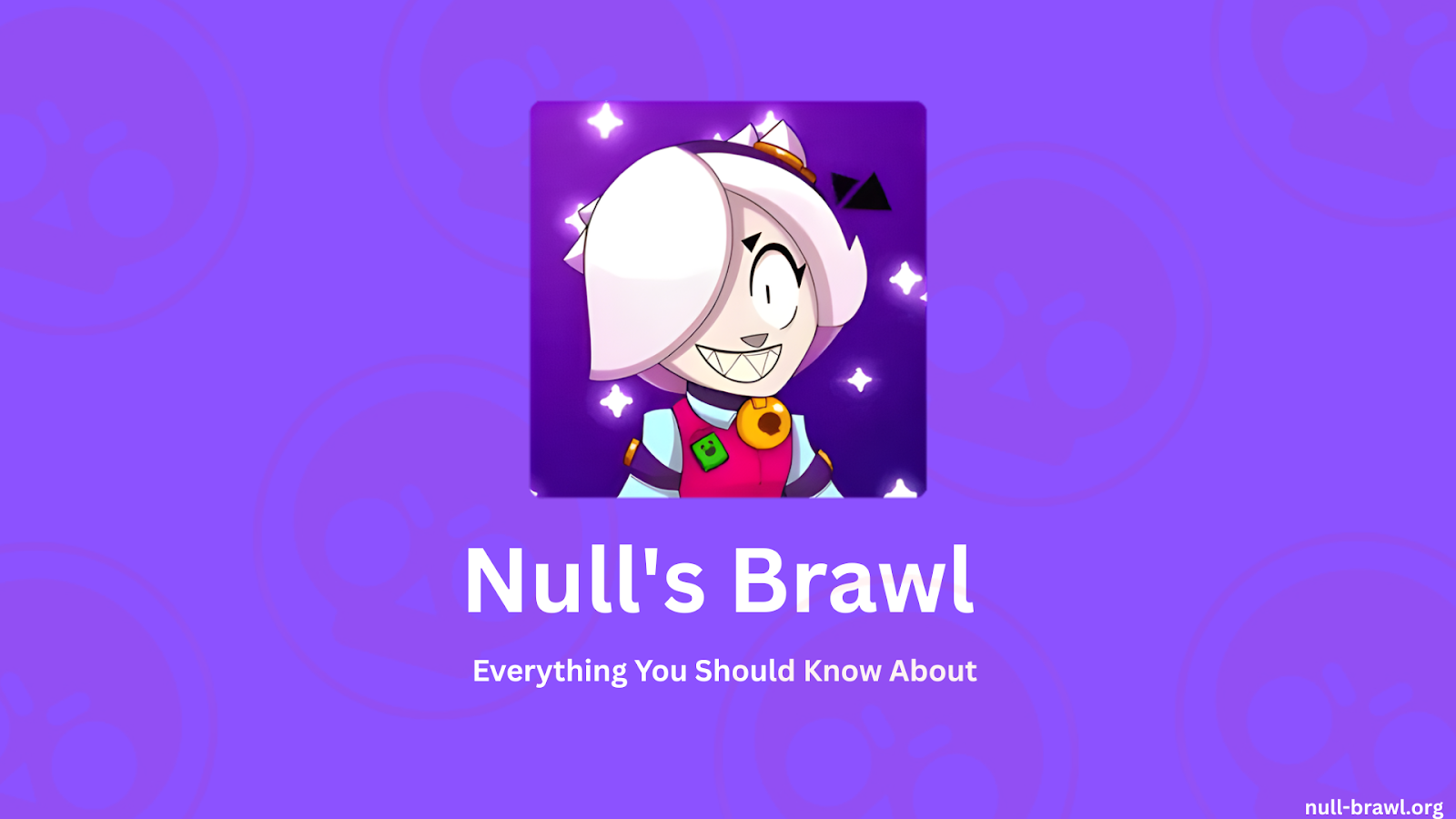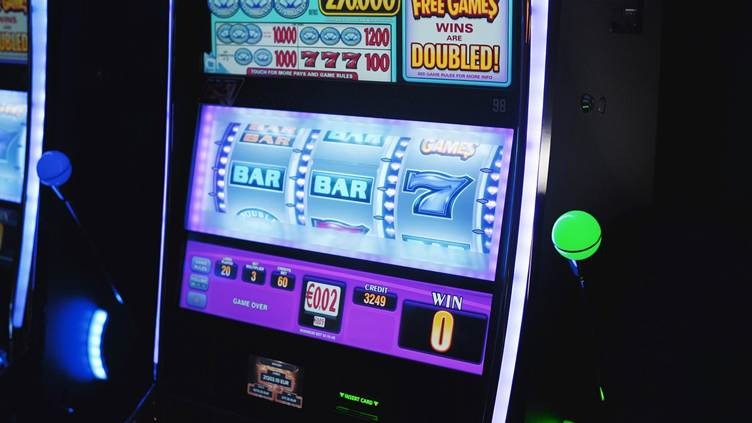Gaming
How Gun Customization in Games Compares to Real Life

Gun customization ranks among the top gaming features players adore. Whether it’s decking out an AR in Call of Duty or a sniper in Escape from Tarkov, the flashy visuals and instant gratification feel gratifying. But how do these virtual upgrades measure up in the real world?
To start, the global gaming accessories market hit $10.5 billion in 2024, driven by immersive features like in-game weapon personalization. Meanwhile, the actual firearms customization market (barrels, stocks, optics) rises steadily through 2025.
Let’s take a detailed tour: from flashy skins and quick-scopes to barrels, triggers, and real mechanical outcomes. We’ll examine what gamers fantasize about, what gunsmiths enjoy, and why both communities overlap more than you think.
1. Visual Skins vs. Real-World Cosmetics
In games, unlocking a gold-plated sniper rifle or neon ACR often takes skill or grinding. No impact on performance, just visual flair.
In real life? A flashy Cerakote finish boosts aesthetics, but black or pink color doesn’t change accuracy. Cosmetic mods like colored handguards or stock coatings serve looks but influence resale value more than function.
Still, plenty of shooters love personalization. Installing custom wood furniture on a Zastava M70, for example, offers both tradition and flair. Check out furniture sets via Zastava parts kits. You enjoy that beautiful wood and tactical respect. Real-life swag carries substance, beauty, and reliability.
2. Optics and Sights: Scope Swap Speed Isn’t Just a Game Trick
Aiming through a game scope feels immediate: magnification, reticle, and zeroing in. In reality, swapping optics takes time and precision. You need proper mounts, torque settings, and often a re-zero after every switch.
Game devs simplify this. Real gunsmiths spend hours aligning red dots, zeroing scopes, and testing recoil before declaring a rifle config combat-ready. It’s not flashy, but it matters.
3. Barrel Upgrades: More Than Pixel Damage
In games, picking a “long barrel” adds accuracy. But in reality, you’d adjust barrels based on ammunition, desired range, or velocity. A longer barrel increases muzzle velocity but also adds weight and length, affecting handling.
Building with real barrels demands threading, ensuring headspace, managing harmonics, and using a properly fitted gas system. Not exactly quick unlocks, but satisfying for those who love depth.
4. Triggers and Fire Control Systems: Pull, Not Just Click
Virtual trigger mods may increase fire rate or accuracy stats. In reality, installing a crisp trigger kit (like a drop-in unit) improves pull weight and reset, enhancing accuracy and shot control.
Smiths adjust components like springs, sear engagement, and pivot geometry. That’s where price tags vary between $150 and $600+ for premium parts. Gamers click once. Real shooters calibrate precision.
5. Rail Systems and Handguards: Function Over Flair
Game customization shows rails for lasers, flashlights, and grips. In real life, you mount a free-float handguard to stabilize optics or reduce barrel heat. Those Picatinny or M-LOK systems balance accessory space with weight and sturdiness.
Proper installation involves torque wrenches, torque specs, barrel nut alignments, and gas tube adjustments, not a quick toggle in a menu.
6. Suppressors/Flash Hiders: Tactical or Just Trendy?
Games reward stealthy suppressed kills or flashy muzzle devices. In reality, adding a suppressor improves hearing protection and reduces flash, but it requires paperwork: paperwork, waiting periods, tax stamps, and length penalties.
Silencers may boost recoil slightly due to added weight; flash hiders are cheaper but function differently. No suppressor = no secret ninja kicks, just legal hoops.
7. Magazine Swaps: Stat Boosts vs. Weight and Reliability
Unlimited ammo capacity? That’s a cheat code in games. In real guns, extended magazines add weight and may cause feeding issues. You’ll need dust cover support, springs strong enough for 40 rounds, and careful tolerance testing.
Game players see “+50 mag size”; real shooters check feed geometry and drop reliability into dirt before declaring victory.
8. Armor, Stocks, and Cheek Rises: Handle That Recoil
Game stats reward ergonomic stocks for recoil control. Real life demands precision: adjusting cheek weld, measuring LOP (length-of-pull), and choosing recoil-absorbing materials. Stocks that look sharp might result in cheek rub or misaligned eye-to-optic during follow-up shots.
Comfort matters, just like recoil punishes when ergonomic detail misses. No virtual drop-off after a headshot.
9. Tactical Attachments: Things Games Miss
Appearances aside, the real world offers smart gear like:
- Bipods for stable shooting from benches or a prone stance
- QD sling mounts that allow sling rotation
- Suppressor alignment washers to time muzzle devices correctly
Games include flashlights or lasers, but forget the practical elements that improve target acquisition, handling noise, or concealment in dynamic environments.
10. Skill vs. Specs: Real Expertise Wins
Games use numbers. You hit “+20% damage” or “+10% accuracy” and expect results. In real life, performance depends on training, ammunition variation, and environmental factors like wind and light.
A perfect scope and trigger only matter as much as your ability to use them. Build silver; become gold through practice.
Final Thoughts: Engineers of Aim
Customization serves both communities: players and mechanics. Games offer quick gratification and visual feedback. Real gunsmithing demands precision, tools, and time, just like building truck superstructures. Yet, both communities enjoy creativity, performance tuning, and aesthetics.
So next time your avatar shows off a neon sniper, remember the real-world equivalent took hours in a gunsmith’s shop, hundreds in paperwork, or thousands in parts. Appreciate both workouts, the reflex drill and the torque wrench.
Because real guns earn respect. Games earn adrenaline.
Gaming
Everything You Should Know About Nulls Brawl

Nulls Brawl has become a popular place for players who enjoy the Brawl Stars world but want more room to explore. It gives players extra freedom inside battles and lets them try characters and ideas that work differently from the original game. Players find a simple and open environment where they can enjoy matches in their own way.
Why Players Prefer Nulls Brawl
Many players choose Nulls Brawl because they like trying new things. It gives them a wider set of options that helps them experiment with different ideas. This makes the gameplay experience more open since you are not limited to one style. Players enjoy this sense of freedom because each match feels different and gives them a reason to try again.
A Larger Collection of Characters
Nulls Brawl includes many characters that behave in interesting ways. Some characters have unique attack styles while others move differently inside the arena. These small differences change how the entire match feels. Players enjoy checking each character and seeing how the battle changes when they switch roles.
Special Visual Styles For Characters
Character designs also play an important part in the Nulls Brawl experience. Many designs look different from what players see in the main game. These styles help players express themselves inside matches. Even a simple change in appearance can make the fight feel new because it changes the way players look at their brawler.
Maps That Add More Interest
The maps inside Nulls Brawl come with layouts that encourage new strategies. Some maps give more open space while others push the action closer. These changes lead to match situations that feel different every time. When players see a new layout, they start thinking about new moves and new paths that they can try in the next battle.
Control Over Match Settings
Players enjoy having more control over match settings. You can choose how strong your character should be, how fast the match should go, and what type of battle you want to try. This flexibility makes the experience more comfortable because you can create the type of match that feels right for you.
A Simple Space To Practice New Ideas
Nulls Brawl helps players test moves without pressure. New players can learn how each character behaves without stress, and experienced players can try advanced ideas that they cannot easily attempt in the main game. This makes the environment helpful for players of all skill levels.
Quick Character Switching
Switching from one character to another feels easy and simple. You can change your character and enter a match instantly. This keeps you inside the action because you do not need to wait or go through long steps. The quick flow helps players stay focused on what they enjoy, which is the battle itself.
Gameplay That Encourages Creativity
The gameplay in Nulls Brawl gives players space to try new strategies. You can use characters in unusual ways and test actions that change how the match plays out. This level of freedom motivates players to look for new ideas and try things that they would not normally attempt in other settings.
Community That Shares Ideas
Players around the world share tips and strategies for Nulls Brawl. This makes it easier for others to learn and improve. People share character ideas, helpful match strategies, and creative approaches that inspire new players. This active community is one of the reasons people return to Nulls Brawl again and again.
Simple Experience For All Types Of Players
Nulls Brawl is suitable for many types of players. Some players like exploring new characters. Others enjoy moving through different maps. Some simply want a relaxed match that suits their mood. Nulls Brawl supports all these styles and helps players find what feels right for them.
Conclusion
Nulls Brawl creates a place where players can explore characters, maps, and match ideas in a more open way. It gives more control, more variety, and more room to try things that feel interesting. For anyone who wants to see a different side of the Brawl Stars world, Nulls Brawl provides a friendly and flexible space to enjoy battles in their own style. For updates and new changes, players can always visit null-brawl.org.
Gaming
The Benefits of No-Data Games that Players Love

In this modern digital era, data and privacy have become one of the most important digital currencies. Almost every website or platform collects and shares user data to a degree. While this data collection is not malicious and often forms the backbone of content personalization, many users worry about the privacy of their data. With the increase of online platforms that require sensitive information like password logins or user payment information, it is understandable that users are concerned about losing their precious information.
Whether it is through data breaches or due to malicious practices, the risk of data loss is always present. For this reason, many users are turning to no-data platforms. These are websites and platforms that do not collect user data. Users prefer these platforms as they offer an extra degree of privacy and security, especially in the volatile world of online gaming.
Why Privacy is so Important in the Digital Age
This current era of digital convenience is one where users are sharing more personal information than ever, from social media posts to entering banking information to pay for goods and services online. Users provide personal information all over the internet. This is why many users are turning to platforms that require little to no private data at all. Digital transactions are being done with cryptocurrencies. Paid streaming services are being switched to free ones. In the gaming sector, players are turning to no kyc crypto casinos to keep their financial and personal information safe. iGaming platforms that do not require upfront KYC (Know Your Customer) verification offer lightning-fast access to thousands of games. The prevalence of data breaches and malicious online attacks has people rightfully worried about the safety of their data. In an online world where personal information is so easy to leak, one of the safest ways to protect data is by not providing any.
Privacy and anonymity are the priority for these platforms. Users can often play with nothing more than a username and an email address.
Key Features That Attract Players
No-data gaming platforms offer players two important benefits: efficiency and privacy. These platforms often require little more than a username or a connected crypto wallet. This seamless accessibility is a massive contrast to traditional platforms that require the completion of lengthy sign-up forms, identity checks, and bank verification.
In addition to seamless sign-ups and logins, no-data platforms offer increased levels of anonymity. Players can navigate platforms behind an anonymous username, and payments or transactions are facilitated through crypto wallets. The very nature of crypto and blockchain transactions guarantees a level of anonymity, as these transactions are linked to nothing more than a wallet address.
The innovations utilized to make no-data platforms a reality have also resolved a pain point many users have with traditional platforms: transaction speed. Many no-data platforms only use cryptocurrency for transactions. This makes transactions faster by cutting out unnecessary middlemen or intermediaries, resulting in faster payments and withdrawals.
Security Through Transparency
While players remain anonymous, fairness and transparency are not sacrificed. Blockchain technology maintains fairness and transparency through immutability and provably fair systems. These systems allow users to independently review and verify all actions and transactions that take place on a particular blockchain ledger. This gives users a sense of safety, transparency, and fairness that matches platforms that require more intense identity verification.
No-data platforms have thwarted any misconceptions about being less secure than platforms that require identity verification. They have done this through unparalleled levels of transparency, strong encryption, blockchain authentication, and frequent security audits.
The success of no-data platforms in the gaming sector is encouraging traditional platforms to consider their lengthy verification processes. Some traditional platforms have started experimenting with reduced-KYC models or completely integrated decentralized technologies that verify users without exposing their personal data.
Conclusion
Players are becoming fonder of no-data gaming platforms. The increased privacy, convenience, and control that these platforms provide are increasing player engagement and retention. By reducing prolonged verification processes and leveraging decentralized technology, no-data gaming platforms can offer streamlined, frictionless gaming experiences with the same levels of security and transparency as traditional platforms. As player and user demand for increased privacy grows, platforms that successfully integrate minimal data verification services and anonymity into their games and websites will play an important role in transforming the next era of online gaming.
Gaming
Step-by-Step Guide to Getting Mods on Minecraft

Installation Tutorial
Do you want to add mods to your Minecraft game? This guide shows what truly works. You need Java Edition first — Bedrock Edition will NOT work. Mods can transform vanilla Minecraft into anything you imagine: new creatures, dimensions, mechanics, and more.
Good news: Mojang recently began removing code obfuscation, making modding easier than ever. No more decoding cryptic code. In this tutorial, we’ll explain how to safely download mods, install mod loaders, and get everything working properly. If you’re planning to play with friends or run large modpacks, you may also want to look into what to look for in minecraft hosting to ensure smooth performance.
But before doing anything else:
✔ Back up your worlds
✔ Create separate profiles for different Minecraft versions
This keeps your vanilla saves safe while you experiment with mods and different setups.
What You Need Before Installing Mods
1. Make Sure You Have Java Edition
Bedrock Edition doesn’t support mods due to its different architecture.
Open the launcher — the title bar will tell you which edition you’re using.
2. Back Up Your Worlds
Copy your entire saves folder to a safe location.
Mod conflicts can destroy worlds, and recovery is often impossible.
3. Create a Separate Profile
Go to Installations → New, name it something like
“1.20.1 Modded”, and select the desired version.
4. Launch the Profile Once
Before you install anything, open the profile once so the game downloads necessary files.
Choosing Your Mod Loader: Forge vs Fabric
Mods cannot run on vanilla Minecraft, so you need a loader.
Forge
- Established since 2011
- Thousands of supported mods
- Required for most large modpacks
- Ideal for older versions (1.12.2, 1.16.5)
Fabric
- Lightweight and fast
- Updates quickly after new Minecraft releases
- Preferred by performance mods like Sodium and Iris
- Great for newer versions (1.19+)
Summary:
- Choose Forge if you want established mods or large modpacks
- Choose Fabric for performance and new-version compatibility
Both loaders automatically create a mods folder.
Installing Minecraft Forge
- Go to the official Forge website.
- Download the installer for your exact version (e.g., Forge 1.20.1).
- Launch the .jar file → choose Install Client → OK.
- Locate your mods folder:
- Windows: %appdata%\.minecraft\mods
- Mac: ~/Library/Application Support/minecraft/mods
- Linux: ~/.minecraft/mods
- Windows: %appdata%\.minecraft\mods
If the folder is missing, create a new one named mods (lowercase only).
Troubleshooting
- Java not found? Install Java 17.
- Antivirus blocking installation? Add a temporary exception.
- You’ll know it worked when Forge appears in the launcher.
Launch the Forge profile once before adding mods — this finalizes setup.
Installing Fabric Loader
- Go to the official Fabric website.
- Download the installer and choose the correct Minecraft version.
- Run the installer.
Important
Fabric requires the Fabric API (separate download).
Get it from Modrinth or CurseForge and place it in the mods folder.
Fabric automatically creates the mods folder on Windows at:
%appdata%\.minecraft\mods
Why Choose Fabric?
- Sodium boosts FPS up to 3×
- Iris handles shaders better than OptiFine
- Updates arrive within days of new releases
- Perfect for modern modding and performance-focused setups
Your Fabric profile will appear in the launcher immediately after installation.
Finding and Downloading Safe Mods
Use only trusted platforms:
- CurseForge
- Modrinth
Both scan uploads for malware. Avoid sites offering “exclusive” or “premium” mods — they often contain viruses.
Check Compatibility
If you run 1.20.1, the mod must say 1.20.1 — not 1.20 or 1.19.4.
Close versions are not compatible.
Also check for required dependencies. Some mods require additional libraries.
Version mismatches cause instant crashes.
Installing Your First Mod
- Download the .jar file from Modrinth or CurseForge.
- Do not unzip it.
- Move it into your mods folder.
Quick Access
- Windows: Win+R → %appdata%\.minecraft\mods
- Mac: Finder → Cmd+Shift+G → ~/Library/Application Support/minecraft/mods
- Linux: ~/.minecraft/mods (press Ctrl+H to show hidden folders)
If the folder doesn’t exist, create one named mods (lowercase).
Launch
Start your modded profile.
You should see a Mods button on the main menu.
If it’s missing:
- Wrong version
- Missing dependencies
- Incorrect mod loader
Crash reports will specify the exact issue.
Managing Multiple Mods
Running many mods can hurt performance. Here’s how to optimize:
1. Increase RAM Allocation
In the launcher:
Go to More Options and change JVM arguments:
-Xmx2G → -Xmx4G (light packs)
-Xmx6G to -Xmx8G (heavy packs)
2. Resolve Conflicts
If two mods change the same systems, Minecraft crashes.
Check crash logs — they name the faulty mod.
Disable mods one at a time to identify conflicts.
3. Keep Versions Consistent
Mixing mods for 1.20.1 and 1.20.2 will always cause crashes.
4. Optional: Subfolders
You can create testing subfolders, but Minecraft still loads everything inside the mods directory.
-

 Finance3 years ago
Finance3 years agoProfitable Intraday Trading Advice For Novices
-

 Gaming3 years ago
Gaming3 years agoSubway Surfers Unblocked | Subway Surfers Unblocked 66
-

 Internet3 years ago
Internet3 years agoWelcome to banghechoigame.vn – Your One-Stop Destination for Online Gaming Fun!
-

 Gaming3 years ago
Gaming3 years agoMinecraft Unblocked Games 66 | Unblocked Games Minecraft
-

 Gaming3 years ago
Gaming3 years agoGoogle Baseball Unblocked | Google Doodle Baseball Unblocked 66
-

 Internet2 years ago
Internet2 years agoPremium Games Unblocked: Unleash Your Gaming Potential
-

 Gaming3 years ago
Gaming3 years agoTunnel Rush Unblocked | Tunnel Rush Unblocked 66
-

 Gaming2 years ago
Gaming2 years agoRocket League Unblocked – Rocket League 2D Unblocked

